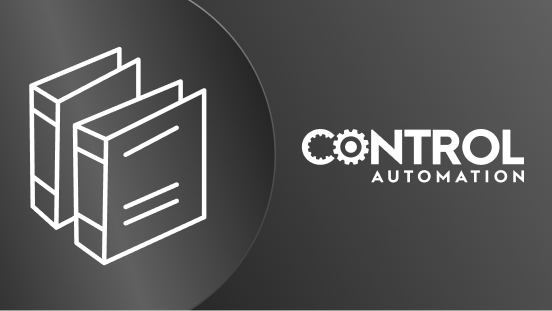
Most of these formulae appear in molecular chemical form rather than structural form. For example, ethanol…
Textbook

A great many chemical composition measurements may be made indirectly by means of electricity, if those…
Textbook

A Safety Instrumented Function, or SIF, is one or more components designed to execute a specific…
Textbook

As we have seen, feedforward control is a way to improve the stability of a feedback control system in the…
Textbook

The three “elementary” particles of matter comprising all atoms are electrons, protons, and…
Textbook

Process analyzers measure the concentration of specific substances for the purpose of measuring and/or…
Textbook

The final step in treating wastewater before releasing it into the natural environment is to kill any harmful…
Textbook

A chemical reaction resulting in a net release of energy is called exothermic. Conversely, a chemical reaction…
Textbook

Sometimes we encounter a diversity of instrument signal standards in one control system. Such is the case with…
Textbook

pH is the measurement of the hydrogen ion activity in a liquid solution. It is one of the most common forms of…
Textbook

Feedback Control System Components Before we begin our discussion on process control, we must define a few key…
Textbook

The concepts of calibration (trimming) and ranging are often difficult for new students of instrumentation to…
Textbook

A unique form of technical diagram for describing the abstract functions comprising a control system (e.g. PID…
Textbook

A fluid is any substance having the ability to flow: to freely change shape and move under the influence of a…
Textbook

Virtually any mass above absolute zero temperature emits electromagnetic radiation (photons, or light) as a…
Textbook

Calculus has a reputation for being difficult to learn, and with good reason. The traditional approach to…
Textbook

Layer 1 of the OSI Reference Model is where we define the “physical” elements of a digital data…
Textbook

Process analyzers measure the concentration of specific substances for the purpose of measuring and/or…
Textbook

Valves can experience a number of problems, most of them either preventable or repairable. These problems can…
Textbook

In the United States, the ANSI and IEEE organizations have standardized a set of numerical codes referring to…
Textbook

A Safety Instrumented Function, or SIF, is one or more components designed to execute a specific…
Textbook

Atom: the smallest unit of matter that may be isolated by chemical means. Particle: a part of an atom,…
Textbook

Pipe is a hollow structure designed to provide an enclosed pathway for fluids to flow, usually manufactured…
Textbook

DC electric current signals may also be used to communicate process measurement information from transmitters…
Textbook

Flow, by definition, is the passage of material from one location to another over time. So far this chapter…
Textbook

A different strategy for controlling the flow of fluid is to insert a rotary element into the flow path.…
Textbook

An engineer named Bob Metcalfe conceived the idea of Ethernet in 1973, while working for the Xerox research…
Textbook

Every flow-measuring instrument exploits a physical principle to measure the flow rate of fluid stream.…
Textbook

Imagine a liquid-level control system for a vessel, where the position of a level-sensing float sets the…
Textbook

A variety of technologies exist to measure the quantity of stored material in a vessel. For liquid…
Textbook

Several different technologies exist for the conversion of fluid pressure into an electrical signal response.…
Textbook

A fundamental principle in instrumentation system troubleshooting is that every instrument has at least one…
Textbook

A pressure switch is one detecting the presence of fluid pressure. Pressure switches often use diaphragms or…
Textbook

Calculus has a reputation for being difficult to learn, and with good reason. The traditional approach to…
Textbook

Those familiar with industrial instrumentation will find much within the electric power industry remarkably…
Textbook

Mechanical pressure-sensing elements include the bellows, the diaphragm, and the bourdon tube. Each of these…
Textbook

Disturbances in the liquid tend to complicate liquid level measurement. These disturbances may result from…
Textbook

“Radio” systems use electromagnetic fields to communicate information over long distances through…
Textbook

Binary patterns are not just able to represent numerical values. Given a standardized code, they may represent…
Textbook

Textbook

Steam boilers are very common in industry, principally because steam power is so useful. Common uses for steam…
Textbook

Most people reading this book have likely had the experience of adjusting water temperature using two hand…
Textbook

One of the most important accessories for any temperature-sensing element is a pressure-tight sheath known as…
Textbook

As discussed at the beginning of this chapter, instrumentation safety may be broadly divided into two…
Textbook

Some problem-solving techniques are unique to quantitative problems, involving mathematical calculations. In…
Textbook

Given the ability of pressurized fluids to transmit force over long distances, it is not surprising that many…
Textbook

A control strategy similar to ratio control is relation control. This is similar to ratio control in that a…
Textbook

The Law of Mass Conservation states that matter can neither be created nor destroyed. The Law of Energy…
Textbook

The following collection of photographs chronicles the complete disassembly of a Fisher E-body globe valve…
Textbook

While the term “probability” may evoke images of imprecision, probability is in fact an exact…
Textbook

One of the great benefits of digital technology is the ability to communicate vast amounts of information over…
Textbook
